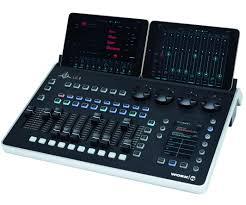Lighting Controller Market Pain Points Hindering Broad-Scale Smart Integration
The lighting controller market, while experiencing growth due to rising smart infrastructure, energy efficiency goals, and IoT integration, continues to face several persistent pain points. These challenges hinder widespread adoption, delay deployments, and create friction across the supply chain—from manufacturers and installers to end-users. As lighting controllers evolve from simple dimmers to intelligent, connected devices, they also introduce complexity, cost, and compatibility concerns. This article explores the core pain points confronting the lighting controller market and their implications for stakeholders.

High Initial Costs and Return on Investment Concerns
One of the most significant barriers to adoption is the high upfront cost of smart lighting controller systems. Advanced lighting controllers that support wireless communication, real-time automation, cloud integration, and energy monitoring often come at a premium compared to conventional systems. This cost includes not only the hardware but also the software licenses, installation services, and potential integration with building management systems (BMS).
For many small and medium-sized businesses and residential users, the return on investment (ROI) is not immediately clear. The long-term benefits in energy savings and operational efficiency may take years to materialize, making the investment less attractive. Cost sensitivity remains a major constraint, particularly in price-competitive or budget-constrained markets.
Complex Installation and Configuration
Another persistent pain point lies in the complexity of installation and configuration. Lighting controllers—especially those designed for large commercial or industrial spaces—often require professional setup, electrical modifications, and system calibration. Integrating these systems with existing infrastructure can be challenging, especially in older buildings not originally designed for smart systems.
Moreover, configuration of scenes, zones, schedules, and sensor integration demands specialized knowledge. For installers and system integrators, this complexity translates into longer deployment times, higher labor costs, and an increased risk of installation errors. For end-users, poorly configured systems can lead to frustration, underutilization of features, and potential operational inefficiencies.
Fragmented Standards and Compatibility Issues
The lighting controller market suffers from a lack of universal standards and interoperability among different products and systems. Multiple proprietary and open protocols—such as Zigbee, Z-Wave, Bluetooth Mesh, DALI, KNX, and Wi-Fi—coexist in the market, often without seamless compatibility. As a result, integrating controllers with various lighting fixtures, sensors, and control interfaces becomes a technical challenge.
This fragmentation forces buyers to commit to specific ecosystems or vendors, increasing dependency and limiting future scalability. In multi-vendor environments like commercial buildings, achieving a unified and cohesive control system can be both time-consuming and costly. It also hinders innovation, as developers must build products that work across a wide array of platforms and standards.
Limited End-User Awareness and Education
Despite growing awareness of smart technologies, many end-users still lack adequate knowledge about the benefits and functionalities of lighting controllers. Especially in residential and small business sectors, users may not fully understand how lighting automation can improve comfort, reduce energy consumption, and enhance security.
This knowledge gap leads to underutilization of features even after installation. Users often stick to default settings or manual controls due to unfamiliarity with programming interfaces or fear of technology complexity. Educational gaps also contribute to buyer hesitation during the decision-making process, slowing down market penetration.
Cybersecurity and Data Privacy Concerns
With the increasing integration of lighting controllers into IoT and cloud environments, data security has become a critical concern. Smart controllers collect and transmit data related to occupancy, usage patterns, and energy consumption. If improperly secured, these systems can become entry points for cyberattacks or unauthorized access.
End-users—particularly in commercial and governmental settings—are wary of implementing cloud-connected lighting solutions without robust cybersecurity measures. Manufacturers are under pressure to incorporate encryption, secure authentication, and regular firmware updates, which increase development costs and system complexity.
Maintenance, Reliability, and System Downtime
While lighting controllers are intended to improve operational efficiency, they also introduce new points of failure. Software glitches, hardware malfunctions, and network issues can result in unintended lighting behavior or complete system downtime. In environments where lighting is critical—such as hospitals, manufacturing facilities, or retail spaces—such failures can disrupt operations and compromise safety.
Additionally, ongoing maintenance requires periodic software updates, troubleshooting, and hardware replacements. Many end-users, especially in the residential market, may lack the technical expertise or willingness to perform regular system upkeep. This reliance on service providers adds to operational expenses and limits user satisfaction.
Limited Scalability for Smaller Applications
Lighting controller systems designed for commercial-scale applications often struggle to scale down effectively for smaller projects. Residential users or small office spaces may not need the full suite of features offered by advanced systems but still find limited, affordable, and reliable solutions tailored to their needs.
This gap in market offerings leaves smaller users with few options that balance simplicity, affordability, and functionality. It also creates an impression that smart lighting is only feasible for large-scale projects, further impeding widespread adoption across all market segments.
Conclusion
While the lighting controller market continues to grow and innovate, several pain points remain unaddressed. High costs, complexity, compatibility challenges, cybersecurity concerns, and lack of end-user education are among the core issues hindering broader adoption. Solving these pain points requires collaboration across manufacturers, developers, policymakers, and integrators to standardize technologies, simplify user interfaces, lower costs, and educate users. Only by tackling these foundational challenges can the market fully unlock the potential of intelligent lighting and drive its adoption across all scales of development.
- Art
- Causes
- Crafts
- Dance
- Drinks
- Film
- Fitness
- Food
- Games
- Gardening
- Health
- Home
- Literature
- Music
- Networking
- Other
- Party
- Religion
- Shopping
- Sports
- Theater
- Wellness


